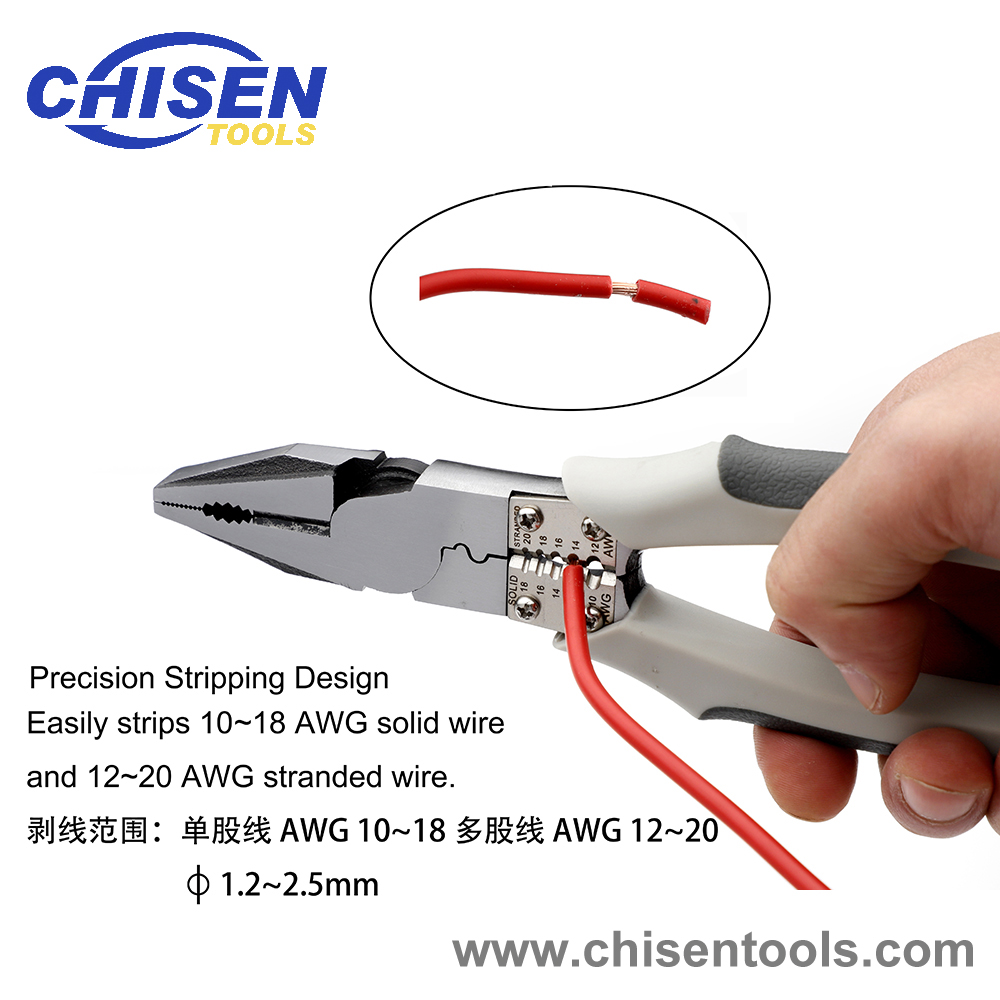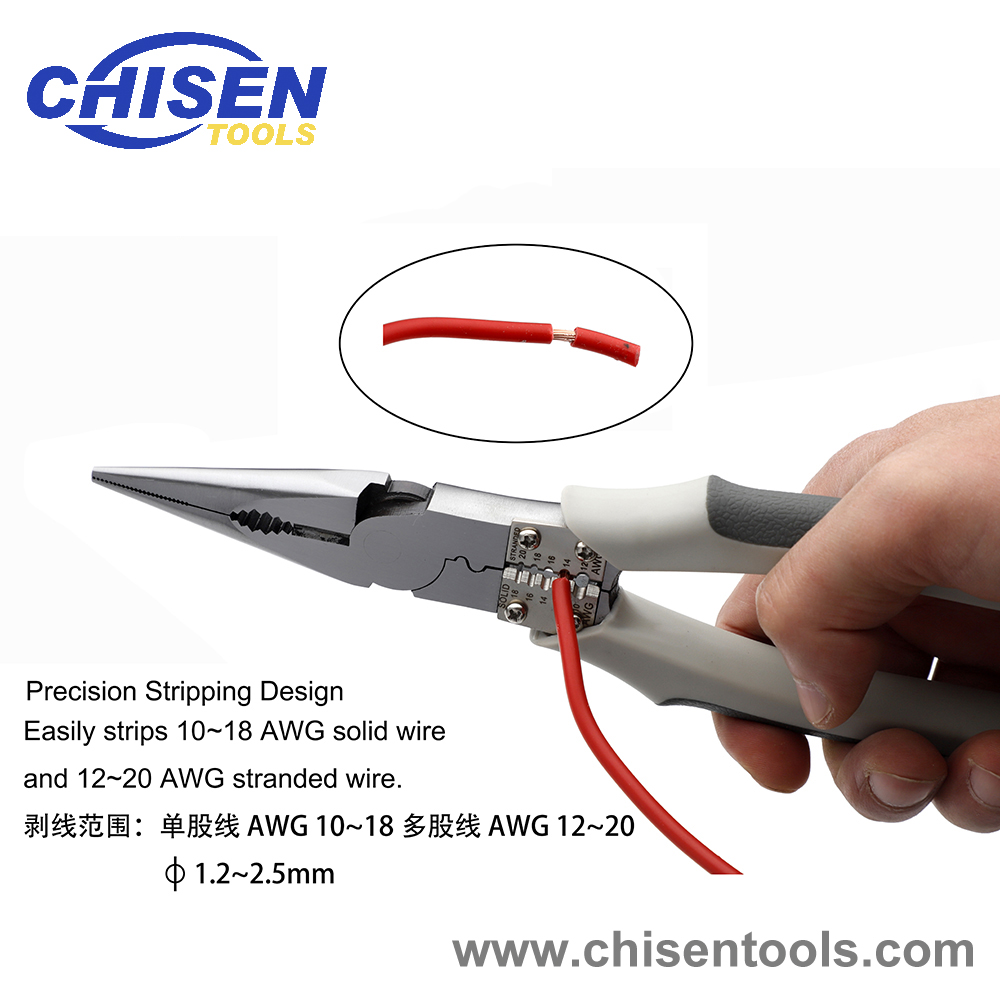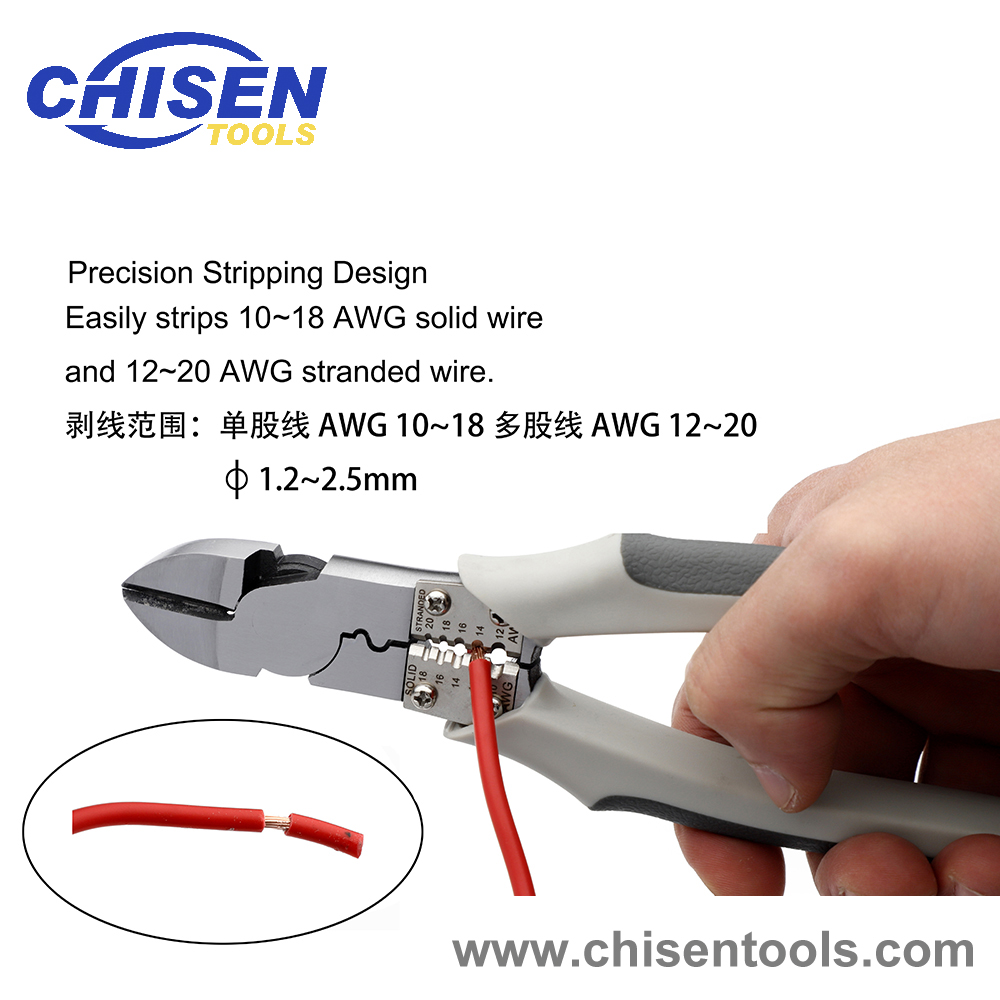What is American Wire Gauge (AWG)?
American Wire Gauge (AWG) is the standard way to denote wire size in North America. In AWG, the larger the number, the smaller the wire diameter and thickness. The largest standard size is 0000 AWG, and 40 AWG is the smallest standard size. It may also be called Brown & Sharpe wire gauge or simply the gauge of the wire.
AWG is for single-strand, solid, round, electrically conductive wire. It was first introduced in 1857 as a standard to replace the various measurements used by different manufacturers. Use of larger numbers denoting smaller wires is similar to Standard Wire Gauge, which is used in Britain. Most other countries use an international metric standard of wire cross-section in square millimeters (mm2) defined in International Electrotechnical Commission 60228.
AWG size does not include the size of the insulation protecting a wire.
0000 AWG is defined as 0.46 inches in diameter, and 36 AWG is defined as 0.005 inches in diameter. All other sizes are derived as logarithmic steps between these two defined sizes. There are 39 gauge steps between these sizes, and the ratio is 1-to-92 in diameter. Therefore, each AWG step is the 39th root of 92, or approximately 1.12293 times the change in diameter.
A smaller gauge (larger size) wire can safely conduct more electricity than a larger gauge (smaller size) wire. Decreasing the AWG size of a wire by three will double the cross-sectional area of a wire and double the amount of current it can carry. Changing the AWG size by 10 will change the cross-section by tenfold.
Since aluminum is not as good of a conductor as copper, for calculating how much current an aluminum wire can carry compared to a copper one, consider it as being 2-gauge AWG larger.
What is American Wire Gauge for stranded wire?
AWG primarily describes single-strand solid wire. When multiple conductors, or stranded wire, use AWG, it gives the equivalent single-strand cross-section in AWG of all the strands cross-sections added together.Stranded wire typically has three numbers to define it. These numbers include the AWG equivalent size, the number of strands and the AWG size of each strand.
As an example, 23 AWG 5/30 stranded wire has five strands of 30 AWG (0.0509 mm2) that equal one 23 AWG (0.258 mm2) wire.
What is the importance of American Wire Gauge?
The larger the cross-section of a wire, the less its resistance. Also, the larger the cross-section, the greater the amount of current (amperage) the wire can safely carry before overheating. A wire with a smaller gauge (larger diameter) can carry more power than one with a larger gauge. In general, a lower AWG number is better than higher AWG.AWG is of primary importance for wires that will carry electrical power -- for example, home or business electrical wiring, extension cords or high-power wire in automotive or audio use. If too small a wire is used (high AWG), then the wire may overheat, melt or catch fire. Therefore, it is important that the current carrying capacity of a wire or circuit be considered.
Larger wire uses more metal and is, therefore, more expensive.
For signal carrying wires, such as audio hookup (RCA, S/PDIF) or video interconnect (VGA, DVI or HDMI), the AWG of the wire is not as important as for power wire. Since these electrical signals are usually low power, smaller AWG (larger wire) is not needed. In these situations, proper shielding and cable-pair twisting is more important for signal integrity than the AWG of the strands.
Lower AWG may increase the physical strength of the cable and can be useful in situations where it will be coiled, bent, pulled or otherwise handled to stop the cable from breaking internally. Stranded wire is also more resistant to breakage from bending than solid wire.
Careful consideration is needed on what AWG wire to use for networking. Since thicker wire has less resistance, it may be needed for long cable runs. Therefore, long Ethernet runs may require a lower AWG cable than short patch cables. If Power over Ethernet is going to be employed, lower AWG wires may be needed to handle the additional current.
Cat5 cable, which can be used for 1000BASE-T networking, uses 22 AWG to 26 AWG cables.
Wire Gauge Size Chart
American wire gauge (AWG) size calculator and chart.
Wire gauge calculator
* @ 68°F or 20°C
** Diameter and cross sectional area do not include the insulation.
*** Results may change with real wires: different resistivity of material and number of strands in wire
AWG chart
| AWG # | Diameter (inch) |
Diameter (mm) |
Area (kcmil) |
Area (mm2) |
|---|---|---|---|---|
| 0000 (4/0) | 0.4600 | 11.6840 | 211.6000 | 107.2193 |
| 000 (3/0) | 0.4096 | 10.4049 | 167.8064 | 85.0288 |
| 00 (2/0) | 0.3648 | 9.2658 | 133.0765 | 67.4309 |
| 0 (1/0) | 0.3249 | 8.2515 | 105.5345 | 53.4751 |
| 1 | 0.2893 | 7.3481 | 83.6927 | 42.4077 |
| 2 | 0.2576 | 6.5437 | 66.3713 | 33.6308 |
| 3 | 0.2294 | 5.8273 | 52.6348 | 26.6705 |
| 4 | 0.2043 | 5.1894 | 41.7413 | 21.1506 |
| 5 | 0.1819 | 4.6213 | 33.1024 | 16.7732 |
| 6 | 0.1620 | 4.1154 | 26.2514 | 13.3018 |
| 7 | 0.1443 | 3.6649 | 20.8183 | 10.5488 |
| 8 | 0.1285 | 3.2636 | 16.5097 | 8.3656 |
| 9 | 0.1144 | 2.9064 | 13.0927 | 6.6342 |
| 10 | 0.1019 | 2.5882 | 10.3830 | 5.2612 |
| 11 | 0.0907 | 2.3048 | 8.2341 | 4.1723 |
| 12 | 0.0808 | 2.0525 | 6.5299 | 3.3088 |
| 13 | 0.0720 | 1.8278 | 5.1785 | 2.6240 |
| 14 | 0.0641 | 1.6277 | 4.1067 | 2.0809 |
| 15 | 0.0571 | 1.4495 | 3.2568 | 1.6502 |
| 16 | 0.0508 | 1.2908 | 2.5827 | 1.3087 |
| 17 | 0.0453 | 1.1495 | 2.0482 | 1.0378 |
| 18 | 0.0403 | 1.0237 | 1.6243 | 0.8230 |
| 19 | 0.0359 | 0.9116 | 1.2881 | 0.6527 |
| 20 | 0.0320 | 0.8118 | 1.0215 | 0.5176 |
| 21 | 0.0285 | 0.7229 | 0.8101 | 0.4105 |
| 22 | 0.0253 | 0.6438 | 0.6424 | 0.3255 |
| 23 | 0.0226 | 0.5733 | 0.5095 | 0.2582 |
| 24 | 0.0201 | 0.5106 | 0.4040 | 0.2047 |
| 25 | 0.0179 | 0.4547 | 0.3204 | 0.1624 |
| 26 | 0.0159 | 0.4049 | 0.2541 | 0.1288 |
| 27 | 0.0142 | 0.3606 | 0.2015 | 0.1021 |
| 28 | 0.0126 | 0.3211 | 0.1598 | 0.0810 |
| 29 | 0.0113 | 0.2859 | 0.1267 | 0.0642 |
| 30 | 0.0100 | 0.2546 | 0.1005 | 0.0509 |
| 31 | 0.0089 | 0.2268 | 0.0797 | 0.0404 |
| 32 | 0.0080 | 0.2019 | 0.0632 | 0.0320 |
| 33 | 0.0071 | 0.1798 | 0.0501 | 0.0254 |
| 34 | 0.0063 | 0.1601 | 0.0398 | 0.0201 |
| 35 | 0.0056 | 0.1426 | 0.0315 | 0.0160 |
| 36 | 0.0050 | 0.1270 | 0.0250 | 0.0127 |
| 37 | 0.0045 | 0.1131 | 0.0198 | 0.0100 |
| 38 | 0.0040 | 0.1007 | 0.0157 | 0.0080 |
| 39 | 0.0035 | 0.0897 | 0.0125 | 0.0063 |
| 40 | 0.0031 | 0.0799 | 0.0099 | 0.0050 |
Wire gauge calculations
Wire diameter calculations
The n gauge wire diameter dn in inches (in) is equal to 0.005in times 92 raised to the power of 36 minus gauge number n, divided by 39:
dn (in) = 0.005 in × 92(36-n)/39
The n gauge wire diameter dn in millimeters (mm) is equal to 0.127mm times 92 raised to the power of 36 minus gauge number n, divided by 39:
dn (mm) = 0.127 mm × 92(36-n)/39
Wire cross sectional area calculations
The n gauge wire's cross sercional area An in kilo-circular mils (kcmil) is equal to 1000 times the square wire diameter d in inches (in):
An (kcmil) = 1000×dn2 = 0.025 in2 × 92(36-n)/19.5
The n gauge wire's cross sercional area An in square inches (in2) is equal to pi divided by 4 times the square wire diameter d in inches (in):
An (in2) = (π/4)×dn2 = 0.000019635 in2 × 92(36-n)/19.5
The n gauge wire's cross sercional area An in square millimeters (mm2) is equal to pi divided by 4 times the square wire diameter d in millimeters (mm):
An (mm2) = (π/4)×dn2 = 0.012668 mm2 × 92(36-n)/19.5
Wire resistance calculations
The n gauge wire resistance R in ohms per kilofeet (Ω/kft) is equal to 0.3048×1000000000 times the wire's resistivity ρ in ohm-meters (Ω·m) divided by 25.42 times the cross sectional area An in square inches (in2):
Rn (Ω/kft) = 0.3048 × 109 × ρ(Ω·m) / (25.42 × An (in2))
The n gauge wire resistance R in ohms per kilometer (Ω/km) is equal to 1000000000 times the wire's resistivity ρ in ohm-meters (Ω·m) divided by the cross sectional area An in square millimeters (mm2):
Rn (Ω/km) = 109 × ρ(Ω·m) / An (mm2)



